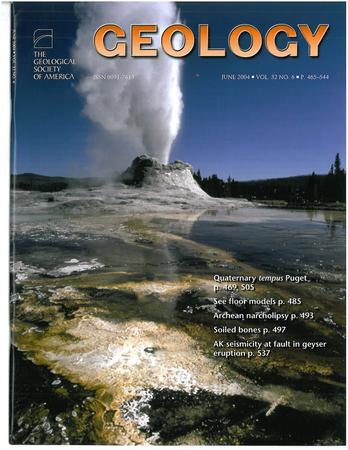侏罗纪昆虫独特的叶片拟态
IF 4.6
1区 地球科学
Q1 GEOLOGY
引用次数: 0
摘要
动物在选择压力下进化出了多种防御策略,模仿是昆虫的重要生存策略。叶子模仿在现代生态系统中广泛存在,但其化石记录仍然很少,通常缺乏目标植物或明确形态适应的直接证据。我们报告了来自道湖沟生物群(约163.5 Ma,中国东北)的侏罗纪直足动物(蚱蜢和蟋蟀,包括蝈蝈)的三个新的叶片模仿案例,其中前翅表现出高度特化的对比颜色图案,非常类似于大量共同出现的bennettitalean(已灭绝的有种子的苏铁类)叶子。这些案例提供了第一个明确的证据,证明模仿昆虫和它们的植物模型都保存在同一层理平面上。它代表了侏罗纪中第一个已知的直翅动物模仿的实例,填补了化石记录的空白,并表明叶片模仿是直翅动物长期以来的一种适应策略,在整个地质历史中独立地在不同的谱系中进化。这一发现强调了植物群落演替、捕食压力和昆虫防御策略之间的动态相互作用,扩大了我们对矫形动物叶片模仿的生态学意义和进化的理解。本文章由计算机程序翻译,如有差异,请以英文原文为准。
Unique leaf mimicry in Jurassic insects
Animals have evolved diverse defensive strategies under selective pressures, with mimicry being a crucial survival strategy for insects. Leaf mimicry is widespread in modern ecosystems, yet its fossil record remains sparse, often lacking direct evidence of target plant or clear morphological adaptations. We report three novel cases of leaf mimicry in Jurassic orthopterans (grasshoppers and crickets, including katydids) (Prophalangopsidae) from the Daohugou biota (ca. 163.5 Ma, northeastern China), in which the forewings exhibit highly specialized contrasting color patterns that closely resemble the abundantly co-occurring bennettitalean (extinct seed-bearing, cycad-like group) leaves. These cases provide the first unambiguous evidence in which both the mimicking insects and their plant models are preserved in the same bedding plane. It represents the first known instance of orthopteran mimicry in the Jurassic, fills a gap in the fossil record, and suggests that leaf mimicry has been a long-standing adaptive strategy in Orthoptera, independently evolving across different lineages throughout geological history. This finding highlights the dynamic interplay between plant community succession, predation pressures, and insect defensive strategies, expanding our understanding of the ecological significance and evolution of leaf mimicry in orthopterans.
求助全文
通过发布文献求助,成功后即可免费获取论文全文。
去求助
来源期刊

Geology
地学-地质学
CiteScore
10.00
自引率
3.40%
发文量
228
审稿时长
6.2 months
期刊介绍:
Published since 1973, Geology features rapid publication of about 23 refereed short (four-page) papers each month. Articles cover all earth-science disciplines and include new investigations and provocative topics. Professional geologists and university-level students in the earth sciences use this widely read journal to keep up with scientific research trends. The online forum section facilitates author-reader dialog. Includes color and occasional large-format illustrations on oversized loose inserts.
 求助内容:
求助内容: 应助结果提醒方式:
应助结果提醒方式:


